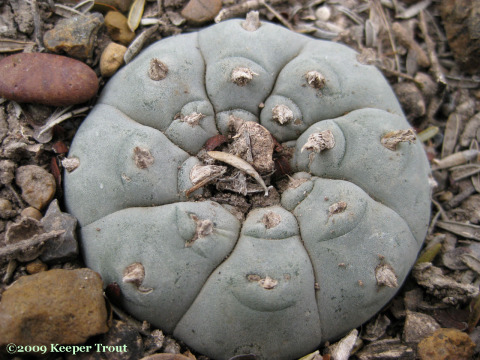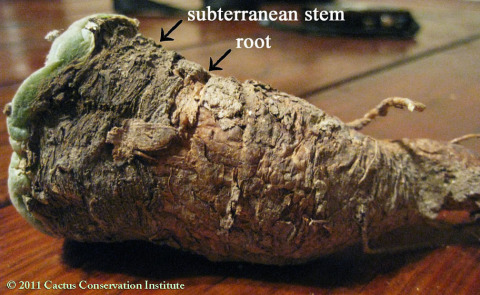Lophophora cacti are these chubby, button-like plants that can grow in clusters or can be found as an individual (pic at the end). Most people, upon first look, might quickly come to the conclusion that Lophs are rather unassuming and might even wrongfully classify them as being...nothing special or perhaps even boring. But anyone in the cactus community, and anyone that recognizes them by their more infamous name, Peyote, can tell you that there is more beneath the surface with these fascinating plants (and we aren't just talking about their wicked tap root either)!
What is Lophophora?
Lophophora is a genus of small, spineless cacti that are native to the southwestern regions of the United States and northern Mexico. The most well-known species in this genus is Lophophora williamsii, commonly known as peyote.
Historical and Cultural Significance
It has a very long history of use among indigenous cultures (known to them as Peiotl) in Mexico and the southwestern United States. It has been used in religious ceremonies and for medicinal purposes for over 5000 years. See here for some great examples of early written records. The Native American Church, which incorporates peyote into its religious practices, was officially recognized by the U.S. government in 1918.
Peyote and Mescaline
Peyote contains a psychoactive compound called mescaline, which is responsible for its hallucinogenic effects. Mescaline has been studied for its potential therapeutic uses, including in the treatment of alcoholism and depression. However, its use is highly regulated and illegal in many countries. As a result of its psychoactive traits, this plant has unfortunately been the target of extreme poaching and over-harvesting.
Slow Growth and Longevity
Lophophora cacti are extremely slow-growing plants that can take up to 10 years to mature from seed. Once mature, these cacti can live for several decades, with some specimens estimated to be over 100 years old.
Unique Appearance
Lophophora cacti have a distinctive appearance with a small, round, button-like shape. They are usually green or bluish-green in color and have a thick, waxy coating to help them retain moisture in their arid environments. Unlike most cacti, they do not have spines, but instead have small tufts of hair-like structures called trichomes.
Conservation Status
Due to illegal poaching and habitat loss, many species of Lophophora cacti are now endangered or protected. It is illegal to harvest or possess peyote in many countries without the proper permits. Efforts are being made, and should continue to be made, to conserve and protect these unique plants and their natural habitats.
Overall, Lophophora cacti are fascinating plants with a rich cultural and historical significance. Their unique appearance, slow growth, and psychoactive properties make them a subject of interest for botanists, anthropologists, and enthusiasts alike. There is a lot more to be said about these plants that we don't have time for, especially when considering the cultural impact it has had. But for now.. That's all Folks!

Photo credit: Trout, Keeper


